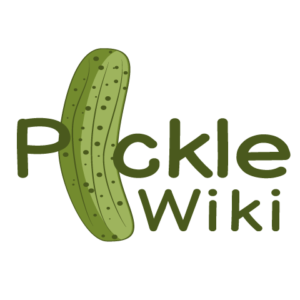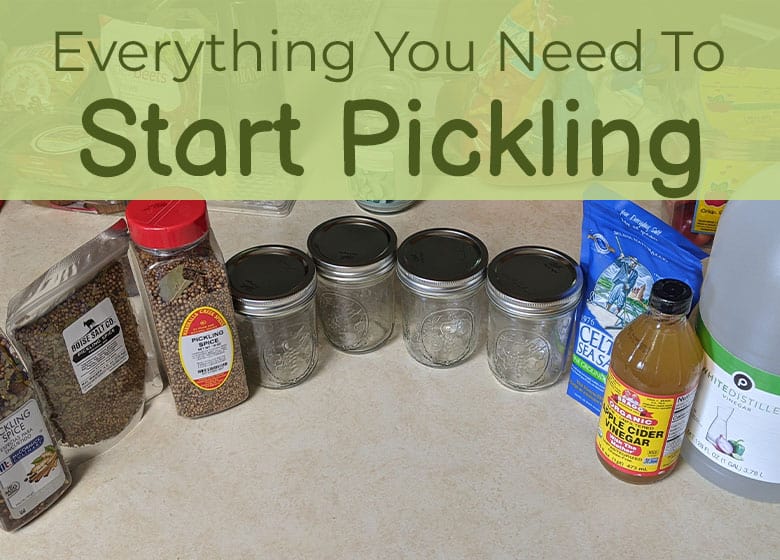Pickling has been around for thousands of years. Originally invented to preserve foods so that they could be used out of season, they are now prized for their health benefits and their delicious acidic flavors. The pickling process itself is quick and easy. It doesn’t require any sophisticated equipment, and you can let your creativity take over by adding as many flavorful combinations as you like.
Some of the things you will need to get started pickling are:
- Jars with lids
- Vinegar with at least 5% strength
- Spices
- Pickling Salt
- Vegetables
You’ll also need (but probably already have) a knife, as well as a cutting board to chop your vegetables or fruits that you plan to pickle. These are the bare minumum things you will need in order to make qucik refridgerator pickles. In order to ferment pickles or store them for longer periods of time you will also need a canning pot and rack.
In this article, we’ll tell you about the equipment you need to start pickling vegetables. We also describe the process, so you can get started today.
What Do I Need to Start Pickling?
In order to start pickling, there isn’t much that you’ll need. You’ll only need a handful of items to begin the process, such as:
- Jars with Lids
- Vinegar (5% strength)
- Pickling Salt
- Pickling spices
- The vegetables or fruits that you want to pickle
- Knife and cutting board
Some of the most common things that you need, which probably already have are a cutting board and a knife to cut which ever fruits and vegetables you need.
Jars For Pickling
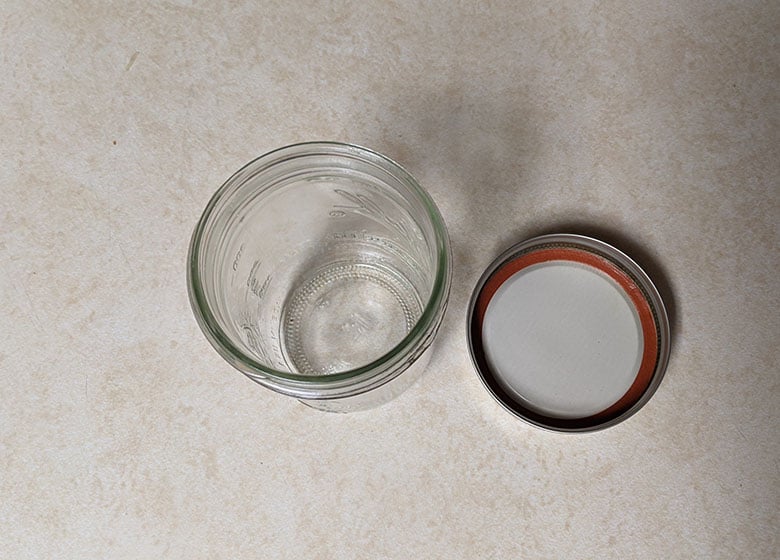
Mason jars are the most common jars for pickling. I’ve found them to be a little expensive on Amazon but I’ve found them for about $1 a jar at my local grocery store.
I’ve mostly use the 12oz wide mouth jars but there are plenty of sizes and all of them can be used for pickling. Just try to think about your storage space. larger 32oz jars will need a larger fridge space to keep.
Best Jar Lids For Pickling
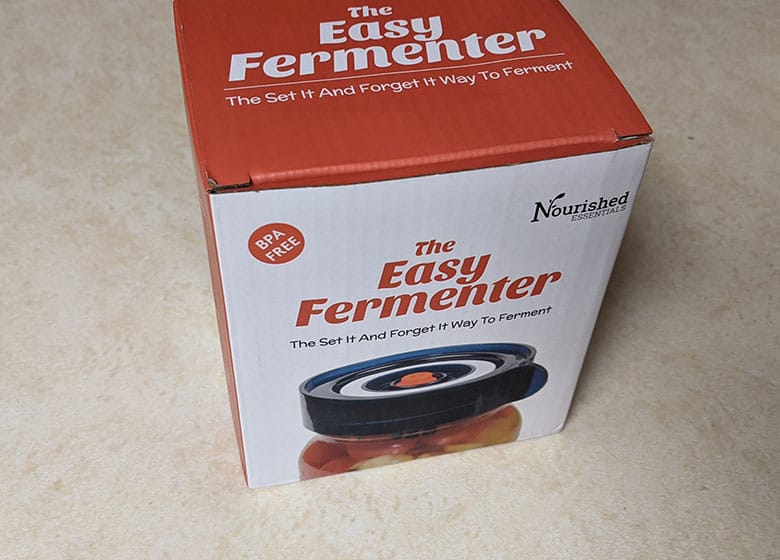
Choosing the best lid will come down to the kind of pickles you want to make. If you are making qucik refridgerator pickles then you can just use the lids that come with you mason jars.
But, if you plan on making fermented pickles it’s a good Idea to get a lid with a one way valve to let co2 out but not allow any oxygen in. I bought these lids and they work great with my wide mouth mason jars.
There are also similar lids that work with wide mouth jars that have a little water airlock on the top that many people have reported work great.
Best Vinegar For Pickling
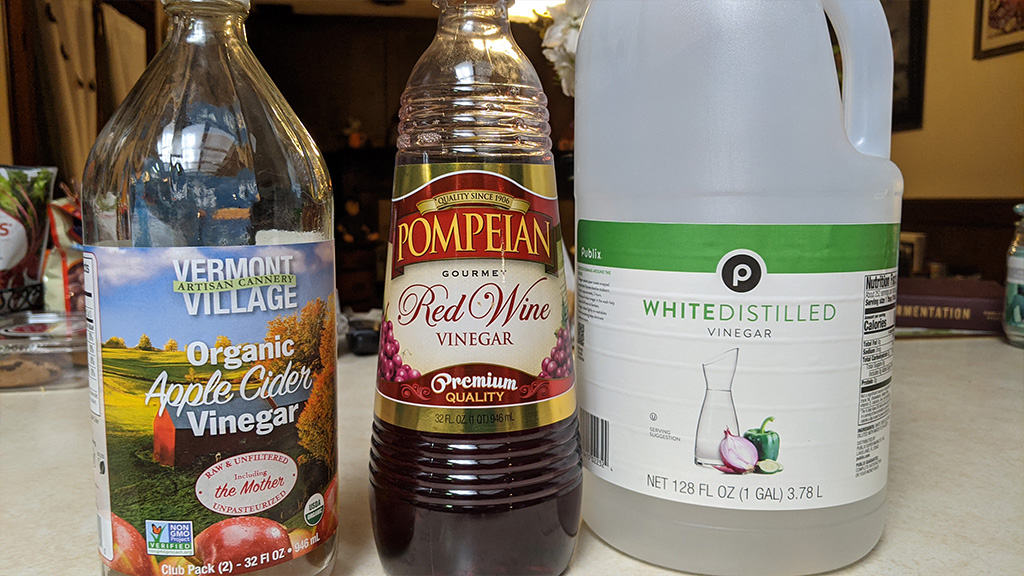
You can choose almost any kind of vinegar as long as it’s 5% strength. You can find the strength usually listed somewhere on the back label.
- White, distilled vinegar
- Apple cider vinegar
- White wine vinegar
- Red wine vinegar
- Rice wine vinegar
Each of these will work well. Each one will give your pickles a different taste. Experiment with them and see which one you like best.
There are some vinegars that will not work well for pickling because they are below a 5% strength.
- Malt vinegar
- Balsamic vinegar
Pickling Salt
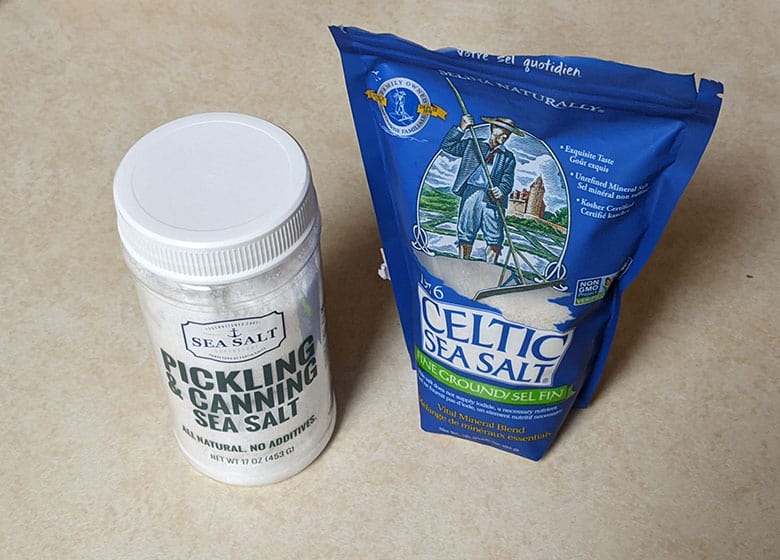
Pickling salt is different from your average table salt because it has not extra additives in it that common table salt does. These additives usually cause the pickling brine to become cloudy.
Pickling Spices
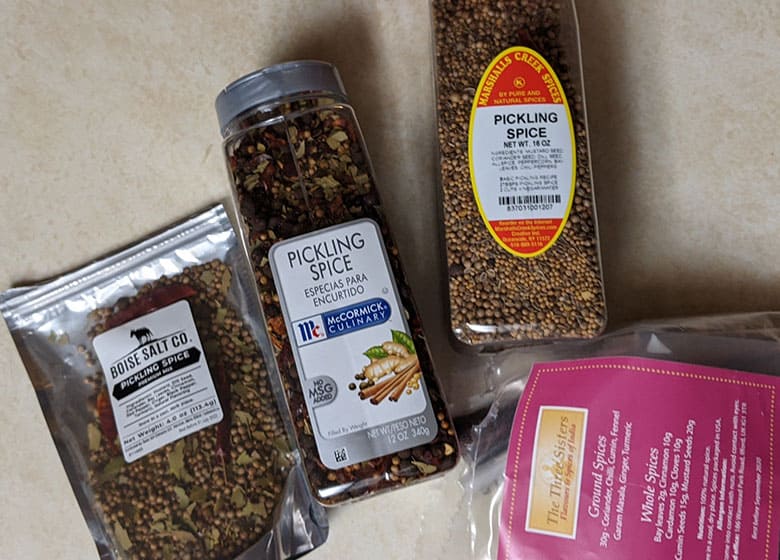
There are pre mixed pickling spices that you can purchase. I’ve used a number of them but my favorite premixed spice pack is made by McCormick. It has a nice blend of mustard seed, Allspice, Clove, and black pepper.
There are many other pickling spices out there and you should try all of them to figure out what you like. I’ve also bought an Indian spice pack, which has 13 different spices, to make my own which has been really fun.
Fermented Pickling Items
You will need all the samethings to make fermented pickles as you would regular pickles but you will also need a pot that can hold you jars in it while you submerge them in boiling water.
A pot with a canning rack is a great tool for pickling and preserving foods in general.
How to Prepare Your Vegetables for Pickling
How you prepare your vegetables depends on the shape of the ingredient and how big your jars are, will your veggies fit in the jar? Although, there are shapes commonly uses for certain vegetables and fruits.
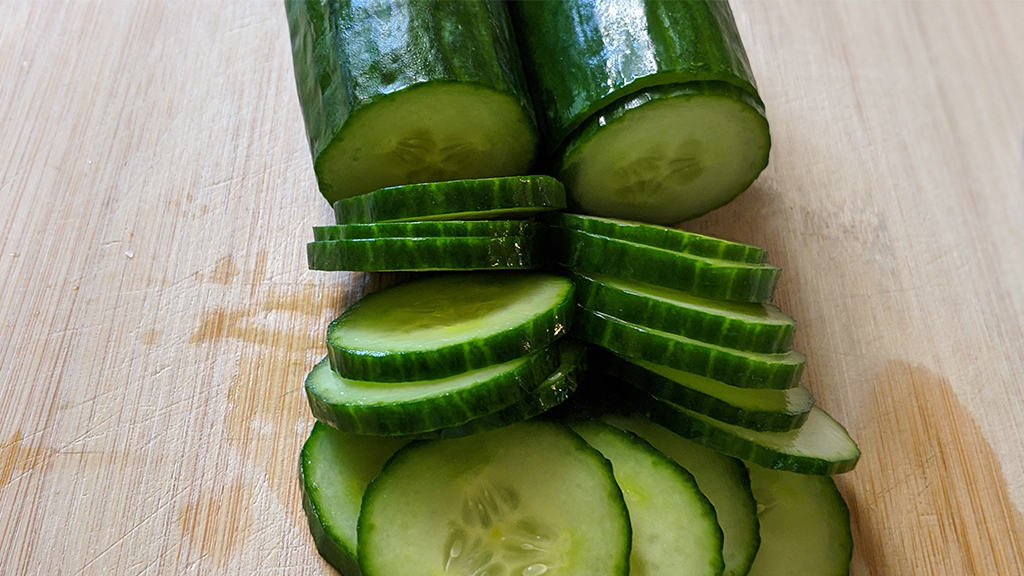
Vegetables and Fruits Typically Sliced for Preparation
- Cucumbers
- Red onions
- Summer Squash
- Tomatoes
- Cabbage
- Ginger root
- Watermelon
- Limes
- Lemons
Vegetables and Fruits Typically Speared for Preparation
- Peppers
- Peeled Carrots
- Cucumbers
Prepare the Storage Jar for the Pickling Process
Hygiene is essential when pickling any food. To avoid the food inside becoming contaminated with harmful bacteria, the jar must be sterilized before use.
The most common way to sterilize your jars is to boil them.
If you choose to boil your jar there are a few steps you will have to take:
- Wash the jar and cutlery in warm water and soap.
- Check that there is no damage: chips or fine cracks
- Remove the rubber seal from the lid
- Place the jar in a pan of water at room temperature
- Slowly heat and boil for 5-6 minutes
- Add the rubber lid seals and boil for 5-6 minutes more
- Turn off the heat and allow to cool before touching with glove
You’ll also want to sterilize the other equipment like the chopping board and knife. Either sterilize these or wipe with disinfectant before using. Of course, you should always wash your hands thoroughly before handling food.
The Pickling Brine is the Most Important Ingredient
Pickling brine is the liquid in which the vegetables will be submerged, and it is what makes the magic happen. The acid creates an environment that makes it difficult for harmful bacteria to grow and encourages the growth of good bacteria. It also gives the pickled foods their wonderful, savory taste.
There are many ways you can combine acids, salt, and water to make a brine, but for beginners, it’s easiest to start with a vinegar brine.
Mixing the Vinegar Brine
It is usually recommended to mix 2/3 vinegar with 1/3 water, although some recipes suggest a 50/50 mix of one-part water to one-part vinegar.
As long as you’re using a 5% strength vinegar you can mix your brine to taste.
It’s also good to mix in your salt at this point as well.
I personally like some slight sweetness to my pickles so at this point you can mix in any sugar if you would prefer to do this as well.
How to Prepare the Vinegar Brine for Pickling
Again, everyone has their favorite method. Here are the two most common, and which one you choose really depends on how much time you have and how soon you want to eat your pickles.
The Simplest Way to Prepare Your Vinegar Brine
It is perfectly possible to place the brine directly into the jar to cover the vegetables or fruits. The advantage of this is that the vegetables will keep their crunchy texture. The disadvantage is that you’ll probably have to wait several weeks for the flavors to combine and develop fully.
Boiling Your Vinegar Brine
However, it’s worth the time and effort to boil the brine before adding to the vegetables, as it will really help the flavors to meld together. If you add the hot (not boiling) brine to the vegetables and let them cool at the same time, your pickles can be ready to eat in an hour or so. but the flavors will continue to develop the longer you let them sit together.
The downside to the boiling method, is that the liquid may have blanched them slightly, and they could lose a little of their crunchiness. If you let the brine cool down before adding to the vegetables, their crunchy texture will be maintained. However, you should expect it to take a week or more until they’re fully pickled.
The Best Vegetables for Pickling
Although the vegetable that most often springs to mind when thinking about pickles is the cucumber, the list of options is endless. You can pickle almost anything, and a multi-colored row of pickle jars crammed with the bright colors of different vegetables looks great in any kitchen.
These are just some of the options to try as you’re getting started:
- Red and green peppers
- Tomatoes, especially cherry tomatoes
- Onions, especially button onions and red onions
- Carrots
- Mushrooms
- Asparagus
- Avocado
- Radishes
- Green beans
- Jalapenos
It’s also possible to make great pickles from luscious, ripe fruits such as”
- Strawberries
- Peaches
- Watermelon (even the rinds are delicious when pickled)
- Cherries
- Pineapple
- Limes
- Lemons
Just a word of caution, pickling won’t soften hard fruit, so ensure the ones you choose are already soft and ready to eat. Although you want to make sure the food isn’t ‘too’ soft otherwise, depending on your method of pickling, the food may become soggy.
Other Foods That You Can Pickle
Pickling has been used as an effective means of preserving not only fruits and vegetables but all other kinds of foods, including meat and fish.
However, if you’re ready to start pickling today, it will be best to start by trying an easy and popular snack: Pickled eggs. Nourishing and delicious, they can be made in minutes.
- Start by preparing your jar and utensils.
- Hard boil your eggs
- Make your brine using white vinegar or apple cider vinegar.
- Don’t add cloves to your flavor mix as they’ll cause the brine to turn brown.
- Add red onion or some beet slices to give the eggs a nice pink color.
- Add extra dill, chili flakes or
- Jalapeno for some extra bite!
- Place in the container, cover with the brine, cover with a wax circle.
- Place in the refrigerator for a week
Pickled foods make great additions to almost any meal. Their acidic flavor balances any fatty meat or barbecue and will add flavor to any bland foods or dishes. The good news is that it is super easy to make pickled foods at home, using a whole range of different types of foods.
Adding More Flavors to Your Pickled Vegetable
This is where your creative culinary flair can kick in. To ensure your pickles are really distinctive and to help them develop a more complex flavor, start with what you are likely to have in your store cupboard:
- Salt
- Black peppercorns
But after these basics, the possibilities are endless. You can buy a classic ready-made pickling spice mixture or mix your own. Typically, commercial blends will be made from:
- Mustard seed.
- Whole allspice.
- Coriander seeds.
- Whole cloves.
- Ground ginger.
- Red pepper flakes.
- Bay leaf
- Cinnamon
So, if you have all of most of these in your cupboard, create your unique blend.
There are many other flavorings which you can use to add interest and complexity to your pickles, but these below should get you started as you set off on your journey of pickle discovery:
- Sliced fresh garlic cloves
- Fresh dill
- Fresh thyme or oregano leaves
- Finely sliced fresh ginger root
- Lemon or lime zest
- Sumac (found in specialty stores, has a delicious mild lemony flavor)
- Sugar If you enjoy a ‘sweet/sour’ flavor combo, try adding sugar to the mix
How to put the Foods and Brine Together
Now your storage container is sterile, and your ingredients are cut, the final step is to mix everything together.
- First, combine the vegetables with the salt, herbs and spices, and any other flavorings
- Next, pack them tightly into the jar
- Press down to expel as much air as you can
- Pour the brine into the jar
- Seal the jar with the lid and check that its airtight
- Shake the jar to make sure that the ingredients are well-mixed
- Place it in the refrigerator
- Shake the jar a couple of times per day to speed up the proccess
Popular Combinations of Flavors and Pickled Foods
One of the beauties of making your pickles is the endless ways you can combine ingredients to create your own unique creations. However, if you want some guidance while you make your first batches, here are some popular ways to match vegetables and flavorings.
In addition to salt and black peppercorns, try using one or more of the following:
- Cucumbers
- Garlic cloves
- Thyme
- Black peppercorns
- Mustard seeds
- Horseradish
- Bay leaves
- Carrots
- Coriander seeds
- Fresh ginger
- Turmeric
- Thyme
- Green beans
- Fresh garlic
- Dill
- Squash
- Onions
- Garlic
- Onions
- Bay leaves
- Thyme
- Tomatoes
- Dill
- Garlic
- Mustard seeds
- Garlic
- Avocado
- Sugar
- Cilantro
- Garlic
- Pineapple
- Sugar
- Limes
- Cilantro
How Long Before the Pickles are Ready to Eat?
The flavors need time to meld and develop, so this really depends on the ingredients and the size of the pieces. In general, vinegar brine pickles should be ready to eat in around 5-7 days.
Once opened, do not leave the contents at room temperature. Keep refrigerated and use the contents within two weeks.
Unopened Pickled Foods Will Eventually Go Bad
The whole point of jarring pickled foods is to preserve vegetables and give you the opportunity to consume them long after their normal shelf-life.
Ideally, for the best flavor, they should be kept in a refrigerator and consumed within a month. Although they will lose some of their crunchiness over time, as long as the jar is left unopened, they should remain edible for around 12-18 months.
How to Tell if Your Pickled Foods are Spoiled
On occasion, pickled foods do spoil. This is usually because the container was improperly sealed. It could also be because the jar, utensils, or ingredients were not perfectly clean.
You can easily tell if the pickles are no longer good to eat by looking for the following signs of spoilage:
- A bad odor.
- Any kind of foul or unusual smell will tell you that the pickles should not be consumed.
- A bulging jar lids
- Bubbled or foam in the liquid of the pickles
- A change in the color of the liquid
- A change in the texture of the vinegar brine
- A change in taste
If there’s evidence of any of the above, do not continue to eat the pickles. Discard the contents of the jar immediately. After opening, your pickled food will eventually mold. The bacteria grown in this environment may contain the same bacteria that contains botulism, which is why it’s important that you consume your opened jar within two weeks.
The Safety Concern Surrounding Pickling
Many people are worried about pickled foods and the possibility of foodborne illnesses. However, as long as you practice correct hygiene and food safety techniques, these will prevent foodborne illness.
Due to the use of vinegar, the jar’s pH is 4.6 or lower, and the food will be correctly pickled. As a result, most of the unwanted bacteria is eliminated.
The Difference Between Fermented Foods and Pickled Foods
Also known as brined pickles, fermented foods do not use vinegar but develop via a process of Lacto-fermentation. Fermented pickles are not only delicious, but many claims are also made for their health-promoting properties.
However, they do require a more complicated curing process than pickles made with vinegar. It can take several weeks for the fermentation to take place and produce the acid which is needed for the preservation process to complete.
How does the fermentation happen?
Lactobacillus, a beneficial bacterium, is found on the surface of fruits and vegetables, including cabbage. When placed in a brine, it is converted into sugars. This is then transformed into lactic acid, which is a natural preservative that prevents the growth of potentially harmful bacteria.
After the initial steps, using salt, water, and flavorings, the acid may be added later to create the distinctive flavor of dills or gherkins.
If you decide to try making fermented pickles, ensure that you follow all the steps to sterilize the container and utensils listed above. Also, clean the vegetables thoroughly to remove any potentially dangerous bacteria, such as E. coli, on their surface. This is especially vital, as there is no acid present to kill harmful bacteria.
Pickling Foods is Easy Once You Have the Correct Equipment
There is no special equipment surrounding pickling, like there is with canning, or any other food preservation process. You just need to make sure you sanitize your equipment, as well as your hands, and your foods will come out perfect!
All you need is:
- A jar with a lid
- The food you want to pickle
- Pickling vinegar
- Pickling salt
- Spices
And once you have all of these, you can get started! You can pickle your favorite foods in less than a day and enjoy them over time!
